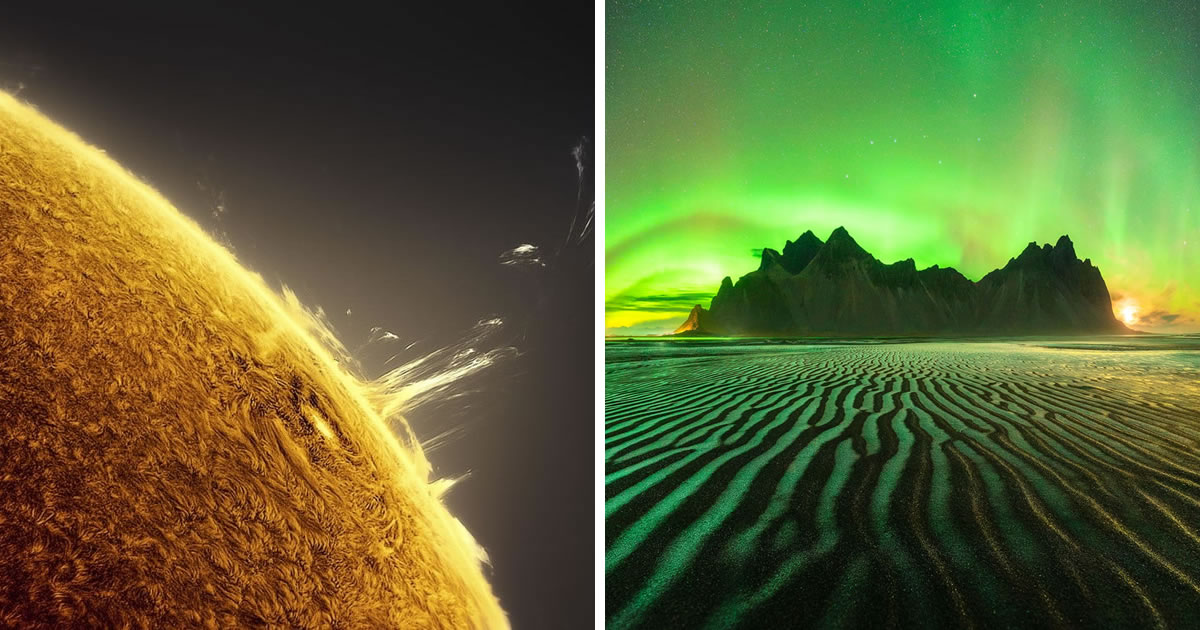[ad_1]
Experience the awe-inspiring wonders of the universe that have ignited our imaginations for centuries, leaving a lasting impact on stargazers and astronomers alike. Step into a realm of cosmic enchantment as we present the mesmerizing finalists for the 2023 Astronomy Photographer of the Year competition.
Prepare to be captivated by a breathtaking display of celestial visuals, ranging from the dynamic dance of solar flares to the vibrant hues of auroras and the hypnotic allure of nebulas. These extraordinary images have captured the attention of the esteemed contest organized by the Royal Observatory Greenwich. Supported by Liberty Specialty Markets and in association with BBC Sky at Night Magazine, this prestigious competition attracts the finest astrophotographers from around the world, and the caliber of this year’s finalists stands as a testament to the fierce competition among them.
A staggering 4,000 entries from 64 countries were submitted to the contest, each one vying for recognition in nine different categories and two special prizes. A distinguished panel of expert judges has meticulously narrowed down the selection, leaving us with a collection of outstanding photographs that exemplify the artistry and technical prowess of the astrophotography community. The winners of the competition will be announced in September, and their extraordinary images, alongside a curated selection of exceptional shortlisted photographs, will be showcased at the National Maritime Museum. Join us in anticipation as we await the unveiling of this year’s victors, revealing which of these stunning photographs will emerge triumphant in the contest.
Scroll down and insire yourself. Check their website for more galleries and information.
You can find more info about Astronomy Photographer of the Year:
#1 Arctic Gates by Daniel Viñé Garcia
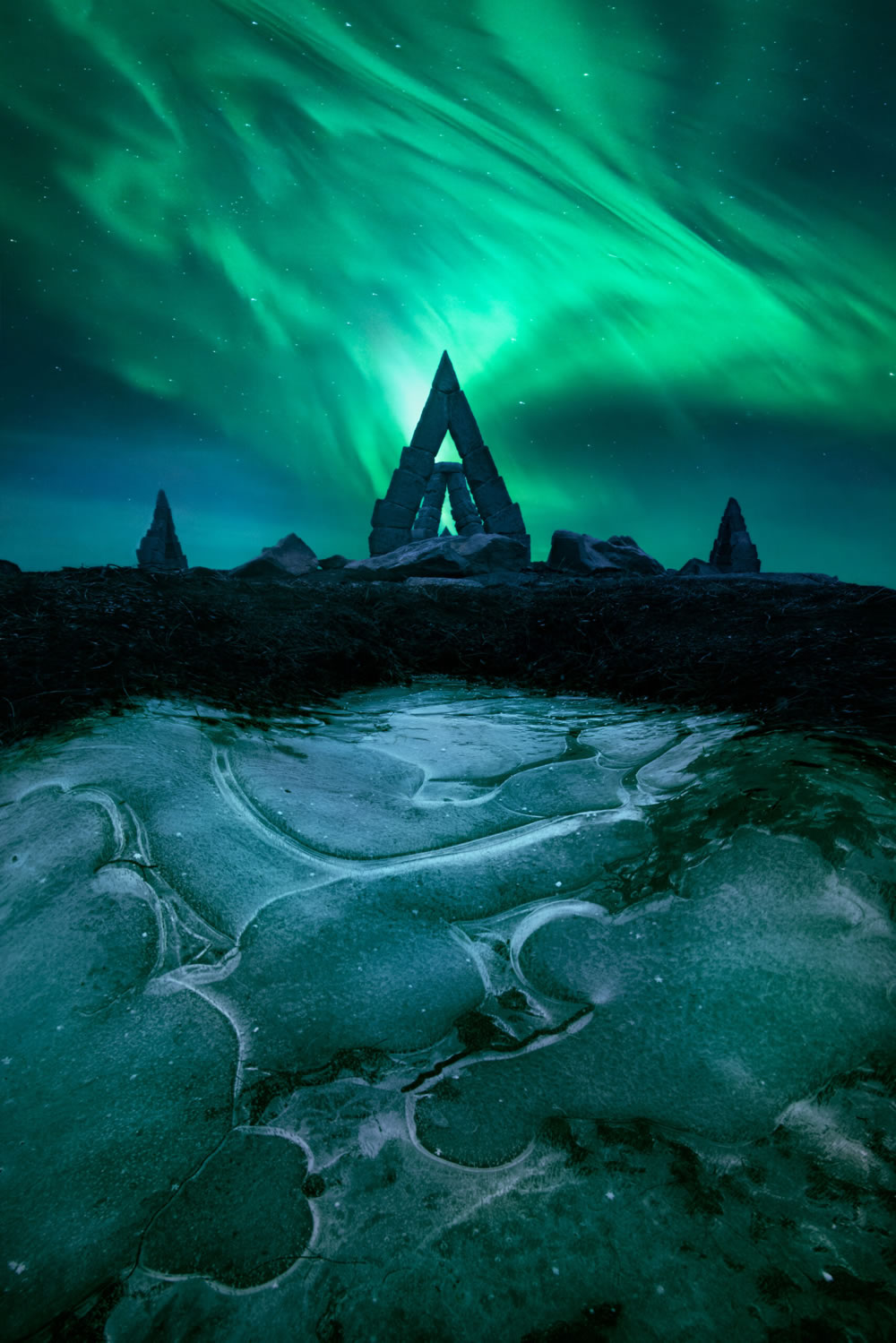
The Northern Lights over the mammoth sundial Arctic Henge, which is inspired by Norse mythology. The henge is located in Raufarhöfn, one of the northernmost towns in Iceland.
Taken with a Sony Alpha 7RIII camera; Sky: 12 mm f/2.8, ISO 2000, 2.5-second exposure; Foreground: f/16, ISO 400, 3 x 4-second exposures
Location: Arctic Henge, Raufarhöfn, Iceland
#2 Comet 2022 E3 Above Snowy Mount Etna by Dario Giannobile
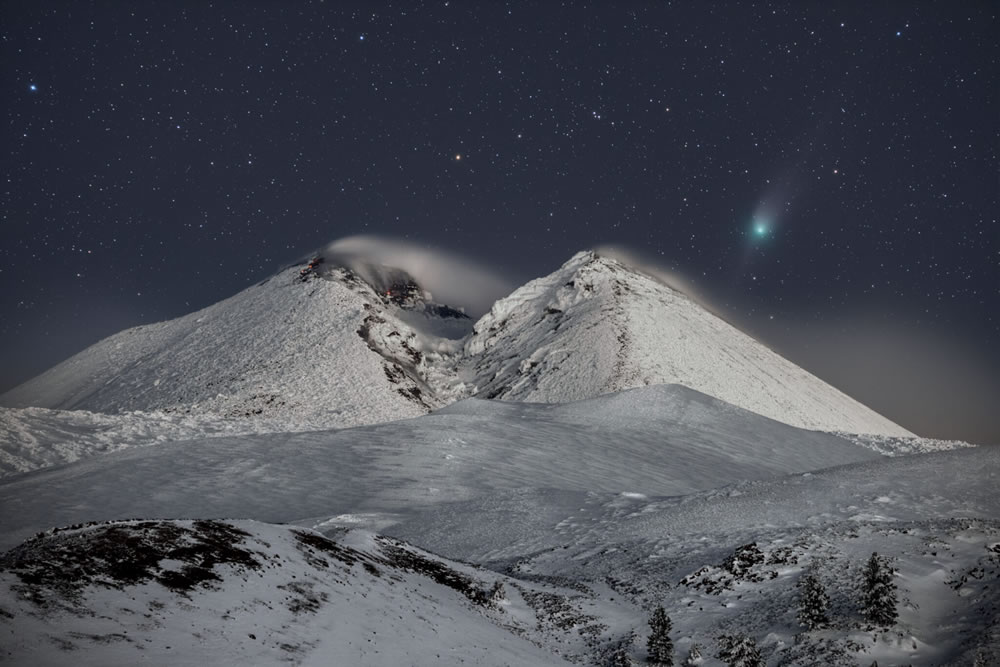
This image shows Comet 2022 E3 soaring over Mount Etna, Sicily as volcanic vapours sweep over the crater. The glowing turquoise green of the comet contrasts with the night sky and snowy landscape.
Taken with a Canon EOS 6D camera, Sigma art 150–600 mm lens, Lightach II Fornax, 293 mm f/7.1; Sky: ISO 3200, 27 x 45-second exposures; Landscape: ISO 320, 2 x 180-second exposures
Location: Mount Etna, Sicily, Italy
#3 Crescent Moon in a Magical Sunset by Eduardo Schaberger Poupeau
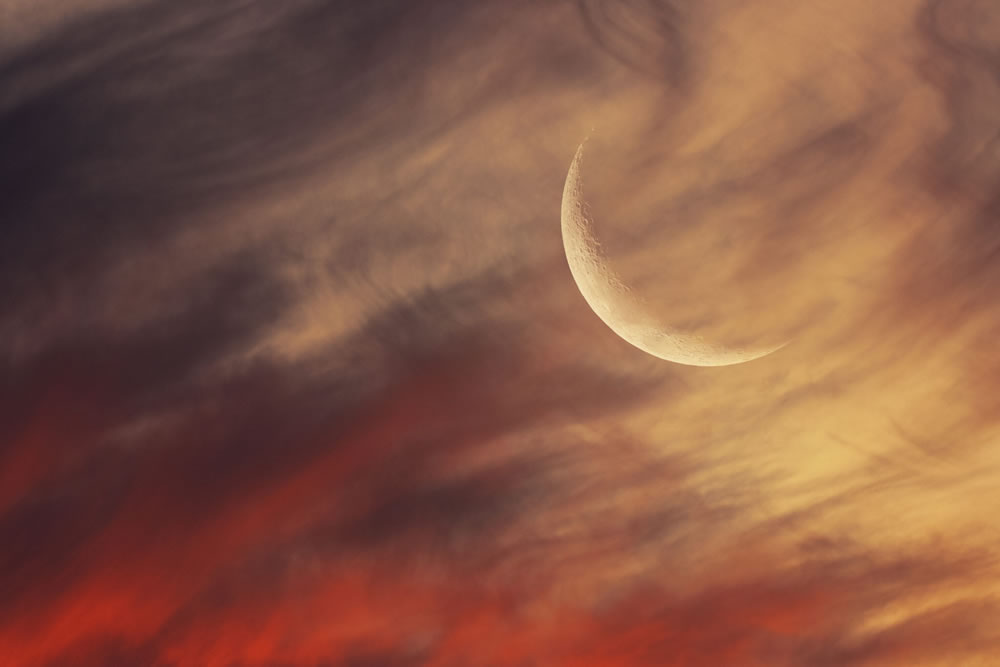
Composite image of three exposures showing the sunset on 1 August 2022 in Rafaela, Argentina. The crescent Moon has 16 per cent of its surface illuminated and the clouds appear an intense red.
Taken with a Canon EOS 90D camera, 600 mm f/6.3, ISO 800, three exposures between 1/400 and 1/100-seconds
Location: Rafaela, Santa Fe, Argentina
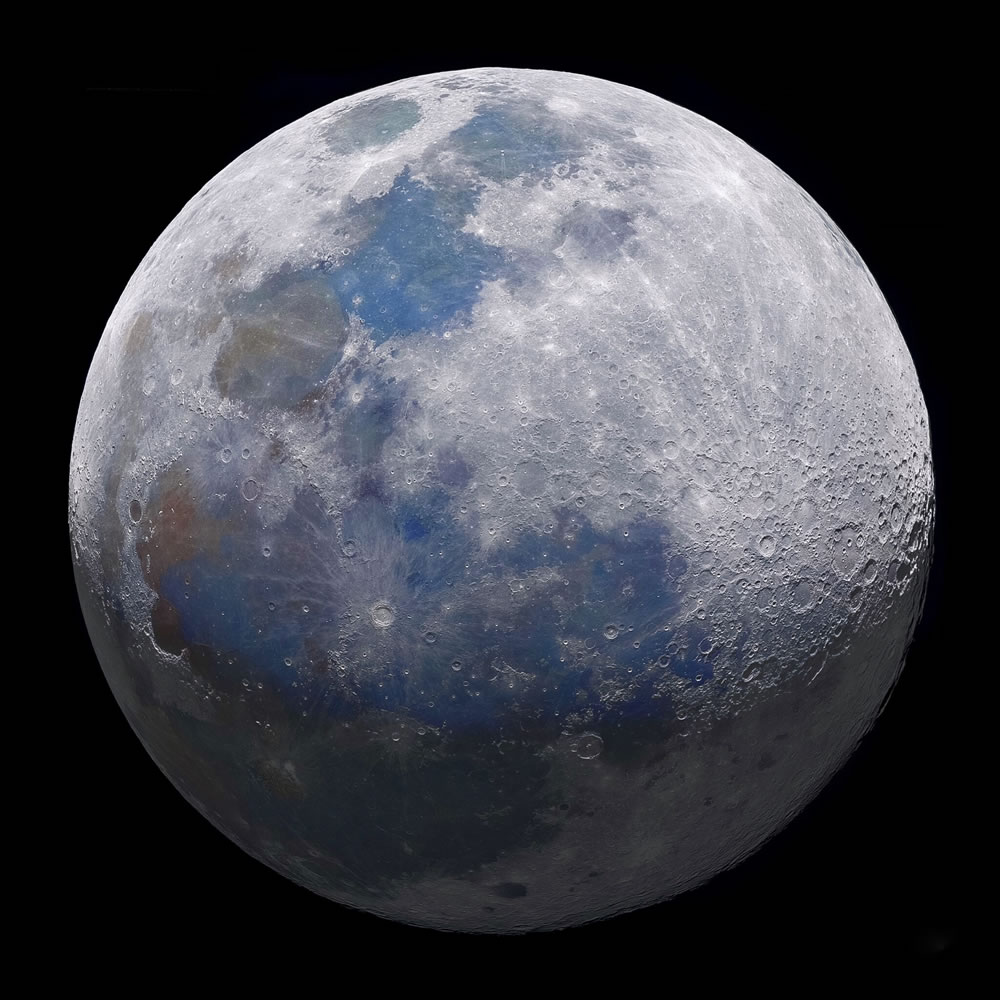
Taken with a Celestron 6SE SCT telescope, Advanced GT mount, ZWO ASI120MC camera, 1500mm 6”, Gain 50, Full Moon: multiple 1-millisecond exposures; Waxing Gibbous: multiple 1.6-millisecond exposures
Location: Wallasey, Wirral, Merseyside, UK
#5 Sperrgebiet by Vikas Chander
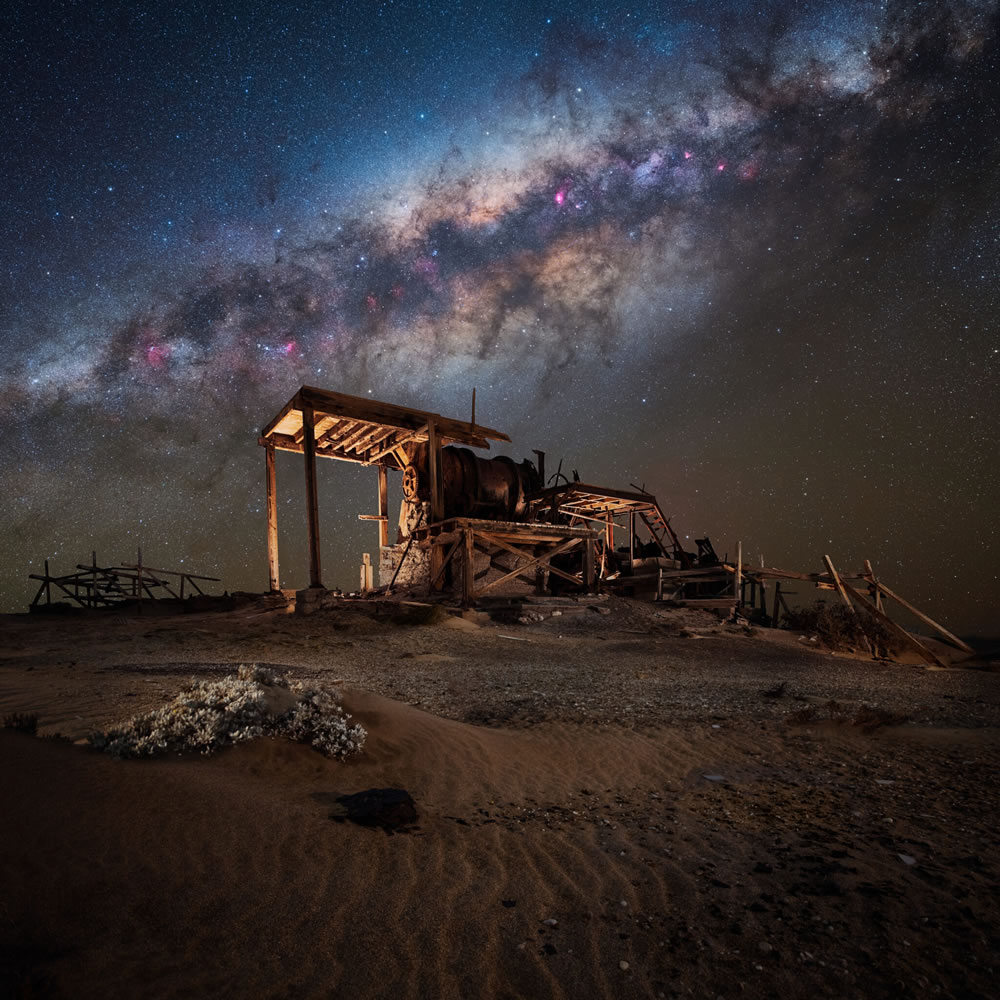
This photograph was taken in Bogenfelsin, Namibia. Formally known as Sperrgebiet, this area was once occupied by German colonialist mining for diamonds. The settlements they built are now ghost towns, seen here is a decayed processing plant.
Taken with a Nikon D850 camera, 21 mm f/2.8, ISO 800, 30-second exposure
Location: Bogenfels, Namib Desert, Namibia
#6 C/2021 A1 (Leonard) in Sky of Israel by Alex Savenok
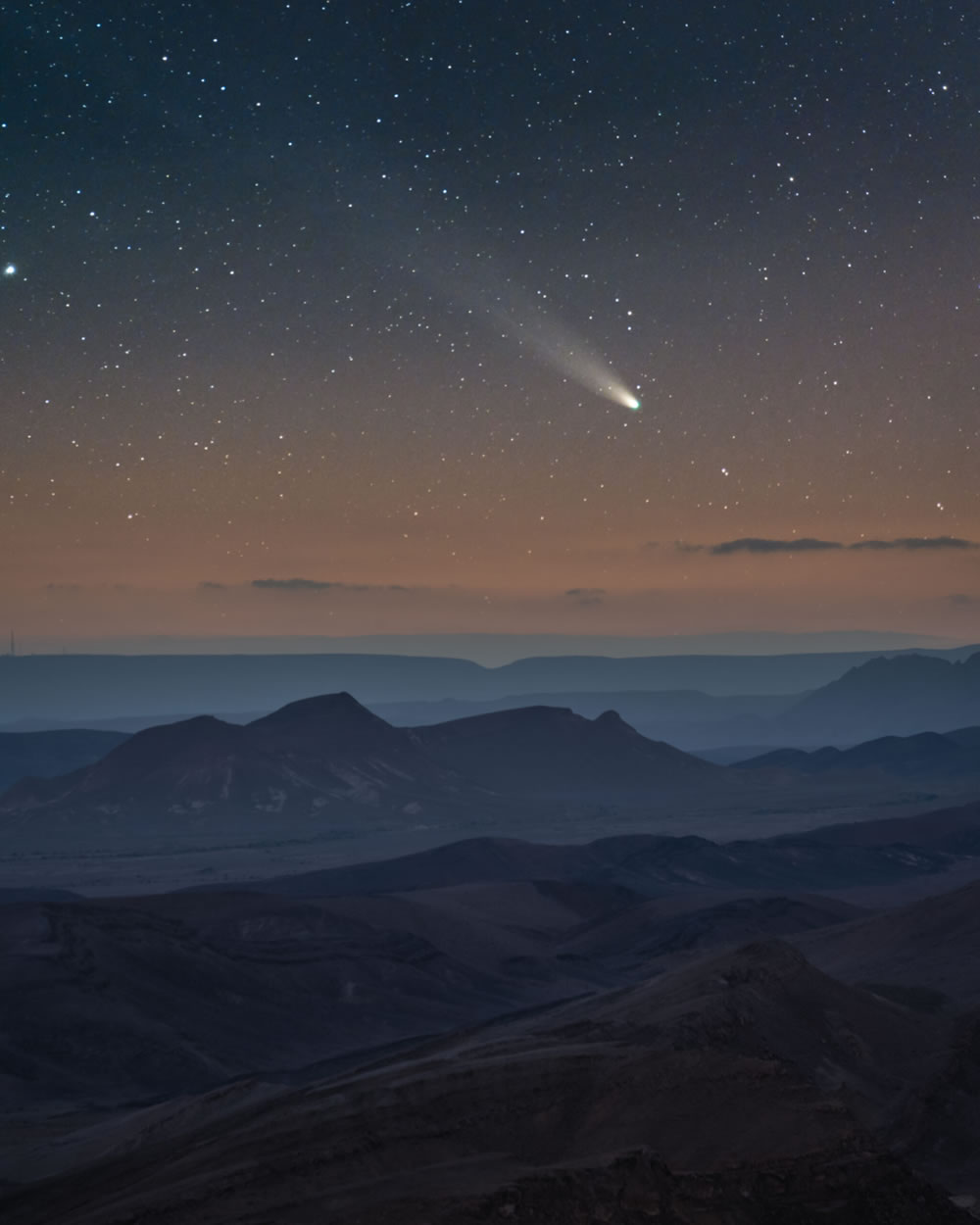
C/2021 A1 (Comet Leonard) captured over the Negev desert, Israel. The comet made its closest approach to Earth in 2021–2022 and was highly visible with a clear tail. Comet Leonard was destroyed by an orbit which took it close to the Sun.
Taken with a Nikon Z7 II camera, 70–300 mm lens, ISO 4000; Sky: 250 mm f/5.6, 22 x 30-second exposures (lights), 30 x darks, 50 x flats (tracked and stacked); Foreground: 240 mm f/5.6
Location: Negev desert, Israel
#7 Dune by Burak Esenbey by Burak Esenbey
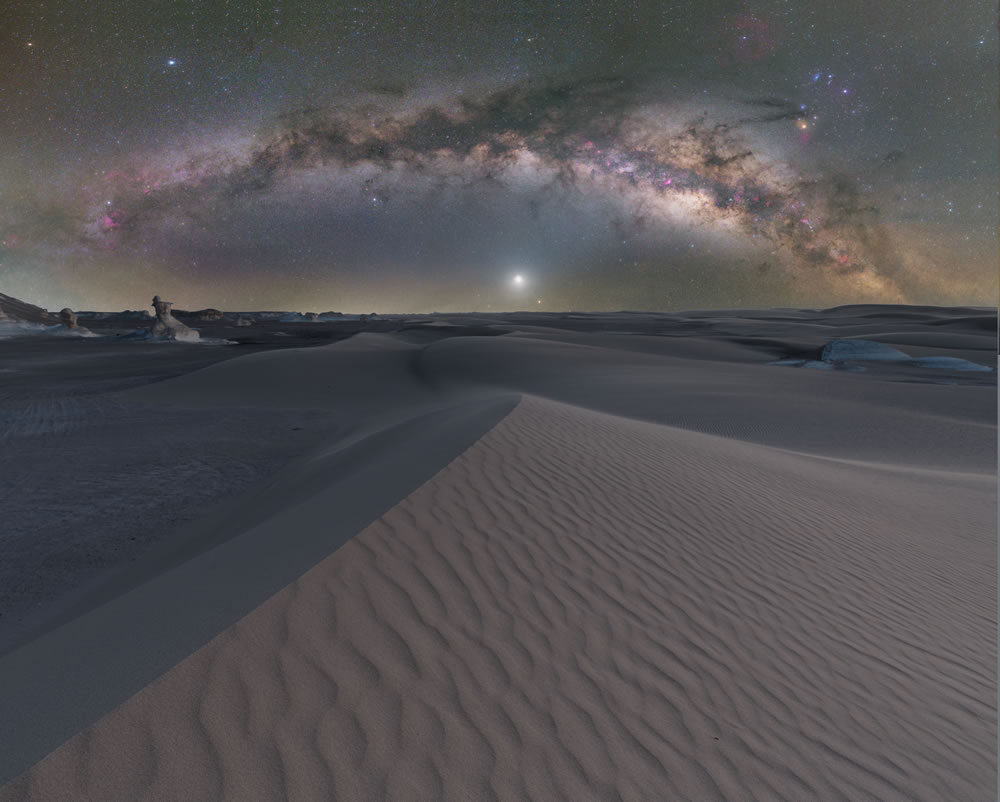
The Milky Way over the White Desert National Park, Egypt. Venus is clearly seen just above the horizon.
Taken with a Sony ILCE-7S (Astro modified) camera, MoveShootMove mount, 18 mm f/2.8, ISO 1000, 4 x 181-second exposures
Location: White Desert National Park, Egypt
#8 The Milky Way by Kush Chandaria
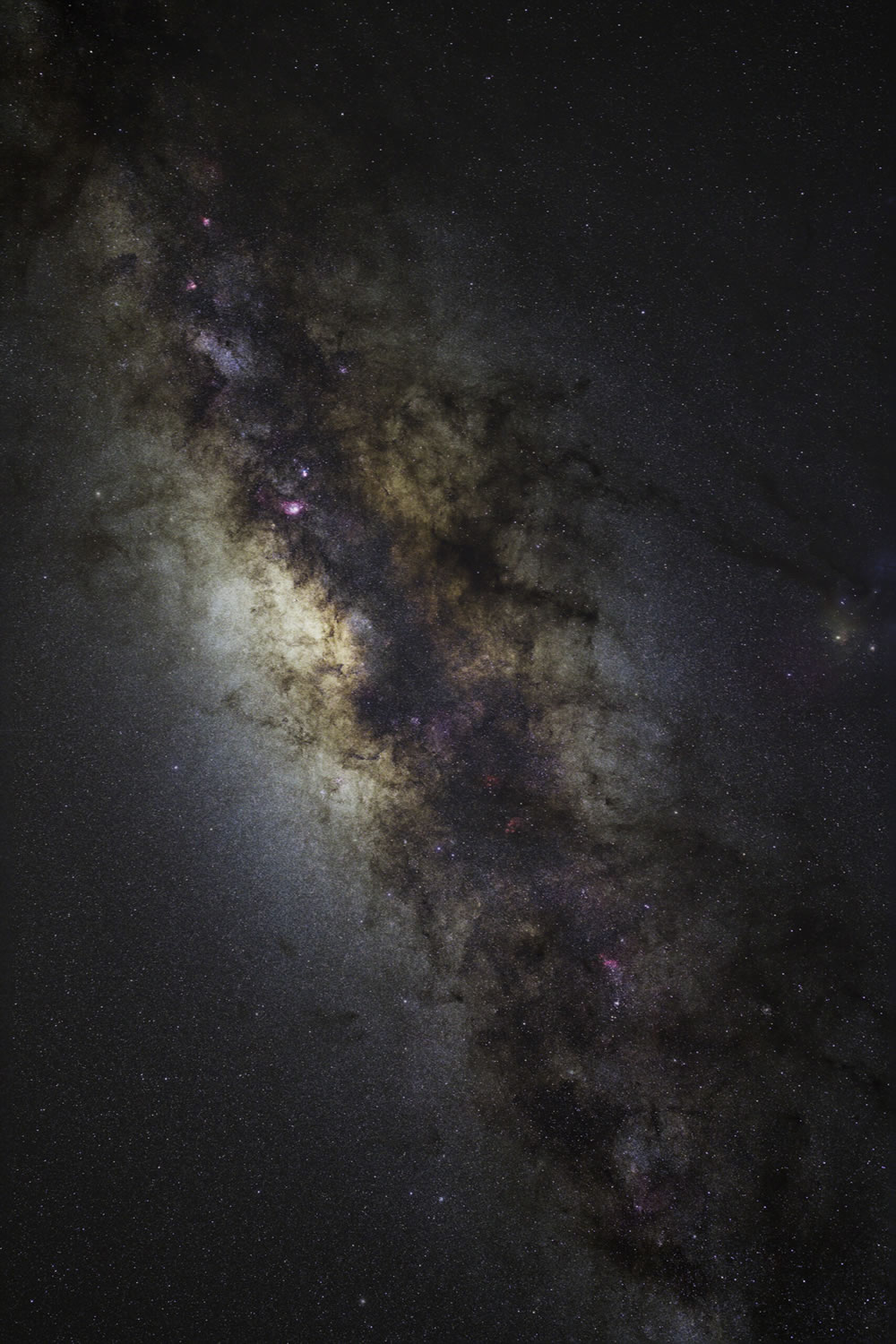
A photograph of the Milky Way taken in the Okavango Delta, Botswana. Due to the lack of light pollution, Chandaria could see the Milky Way clearly with the naked eye.
Taken with a Sigma Art 40 mm telescope, Sky-Watcher Star Adventurer Pro mount, CanonEOS Ra camera, 40 mm f/1.4, ISO 1600, 10 x 10-second exposures
Location: Okavango Delta, Botswana
#9 Mare Crisium: From Light to Dark by Andrea Vanoni
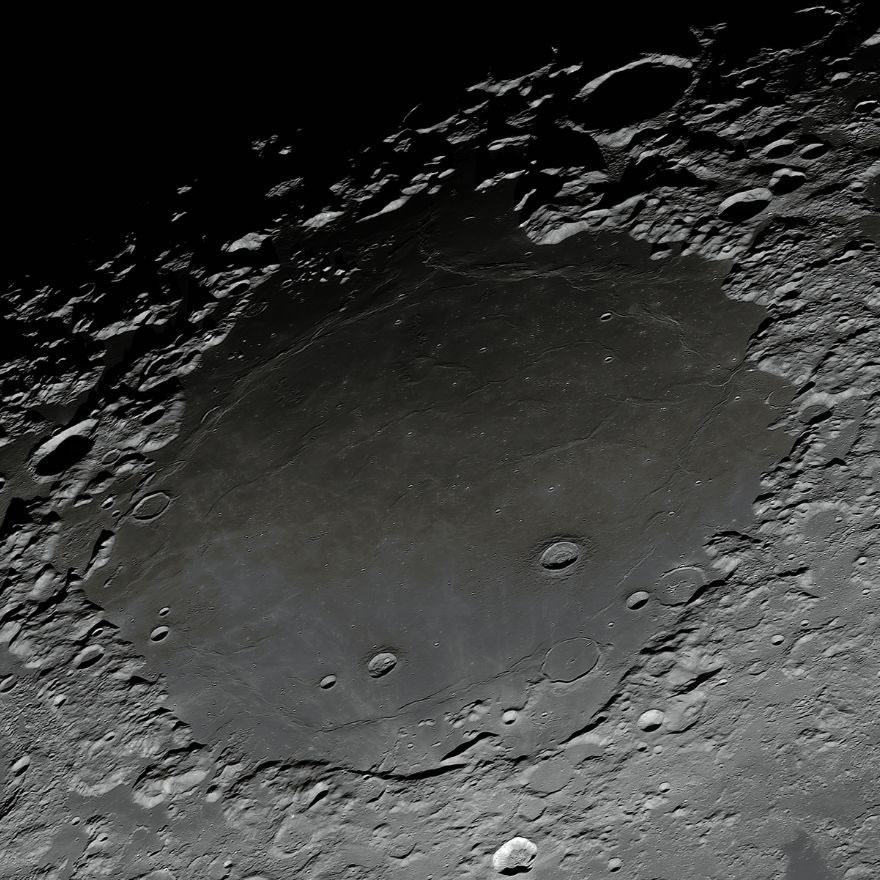
Mare Crisium is a lunar sea located in the Moon’s Crisium basin, just northeast of Mare Tranquillitatis. This mosaic photograph is made up of two high-resolution images showing a multitude of craters inside the basin.
Taken with a Newton Ares 405mm F4.5 telescope, Baader R-filter, Sky-Watcher EQ8 mount, ZWO ASI178MM camera, 6000 mm f/20, 1/400 exposure
Location: Porto Mantovano, Mantua, Lombardy, Italy
#10 Curtain of Light by Andreas Ettl
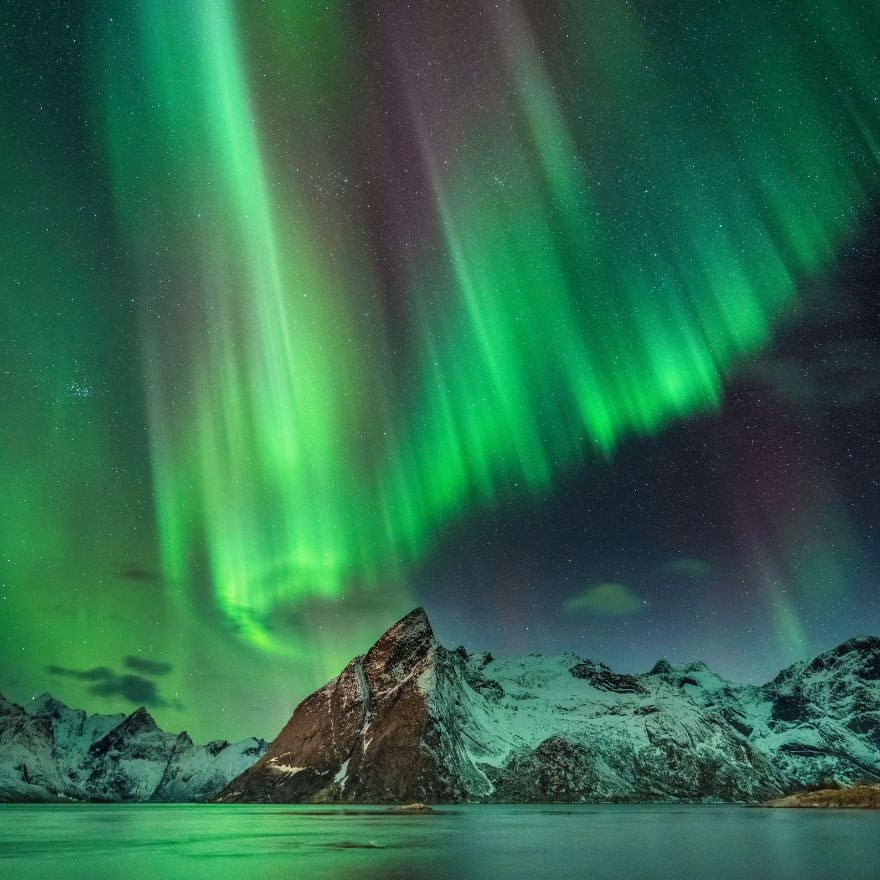
A photograph of an auroral substorm which suddenly formed, throwing an incredible curtain of light over Olstind mountain. After just two shots, the lights had faded away into the night.
Taken with a Nikon Z7 camera, 17 mm f/2.8, ISO 1600, 10-second exposure
Location: Hamnøy, Lofoten Islands, Norway
#11 Dolbadarn Castle, Home of Welsh Princes by Robert Price
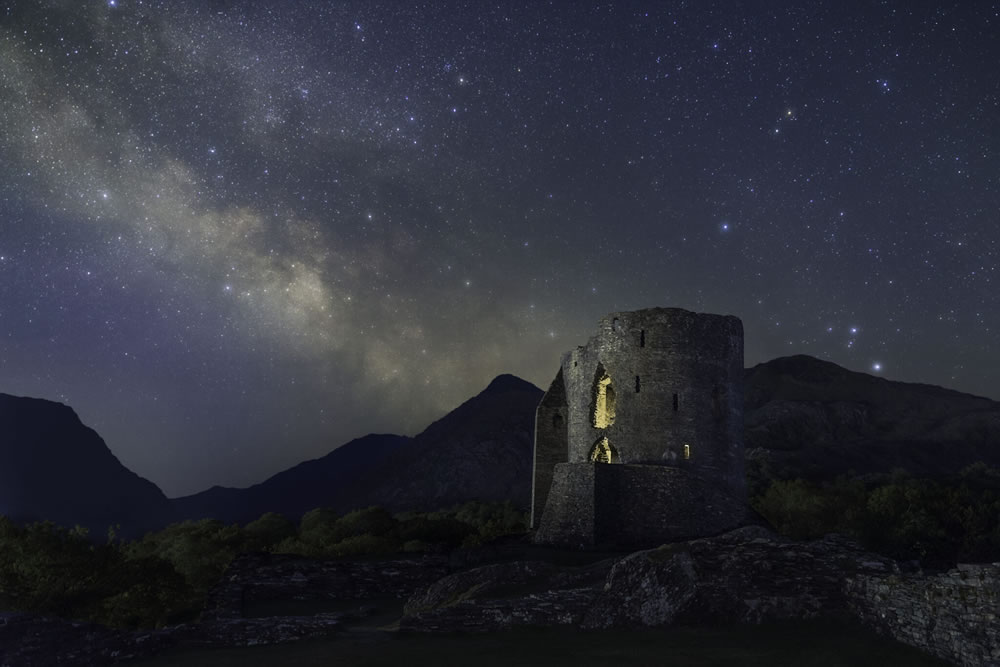
This photograph was taken at Dolbadarn Castle, a late 12th-century castle located above Llanberis in the heart of Eryri. The core of the Milky Way can be seen rising behind the castle and the Snowdon (Yr Wyddfa) range of mountains.
Taken with a Canon EOS 6D Mark II camera, Sky-Watcher Star Adventurer Mini mount, 24 mm f/2.8, ISO 800; Sky: 25 x 120-second exposures; Foreground: 10 x 45-second exposures
Location: Llanberis, Gwynedd, Wales, United Kingdom
#12 Celestial Equator Above First World War Trench Memorial by Louis Leroux-Gere
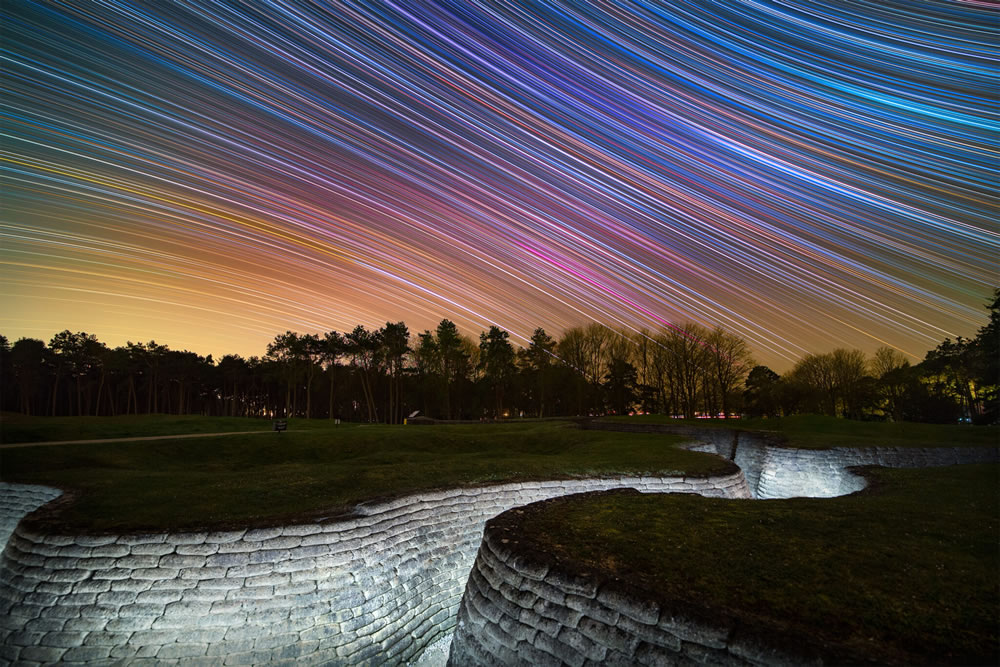
Star trails above the preserved First World War trenches in Canadian National Vimy Memorial Park, Northern France. Taken over five hours, the camera captured the rotation of the sky revealing the colourful stars.
Taken with a Canon EOS 6D (Astro modified), Samyang XP 14 mm f/2.4 lens, 14 mm f/3.2, ISO 1000, 577 x 30-second exposures
Location: Vimy, Pas-de-Calais, Hauts de France, France
#13 Radio Polaris by João Yordanov Serralheiro
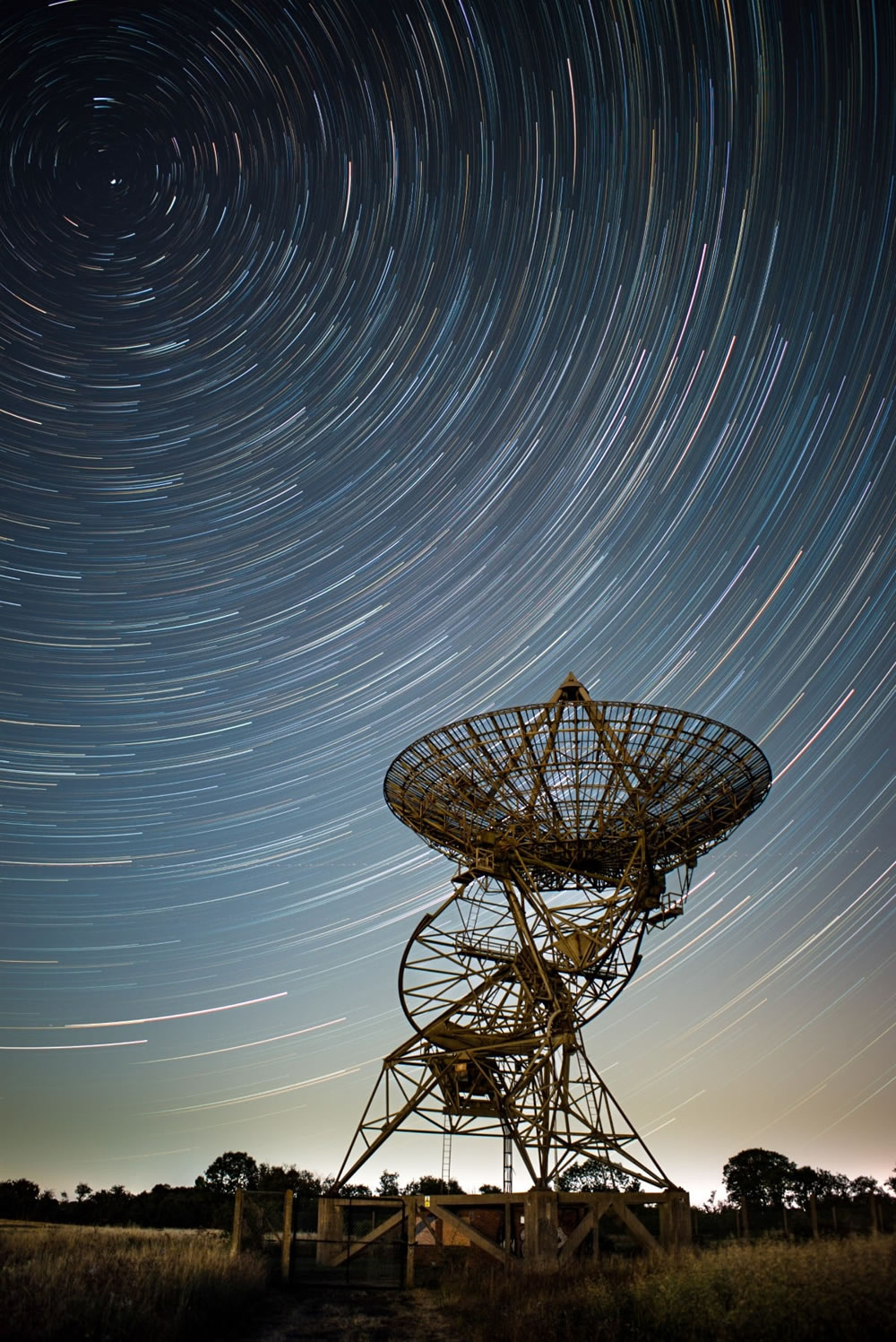
Star trails taken over a deactivated radio telescope antenna. The image was achieved with a simple remote shutter locked for continuous images.
Taken with a Sony ILCE-7M2 camera, 28 mm f/2, ISO 200, 124 x 30-second exposures
Location: Mullard Radio Astronomy Observatory, Cambridge, United Kingdom
#14 Solar Flare X1 from AR2994 in ‘Motion’ by Miguel Claro
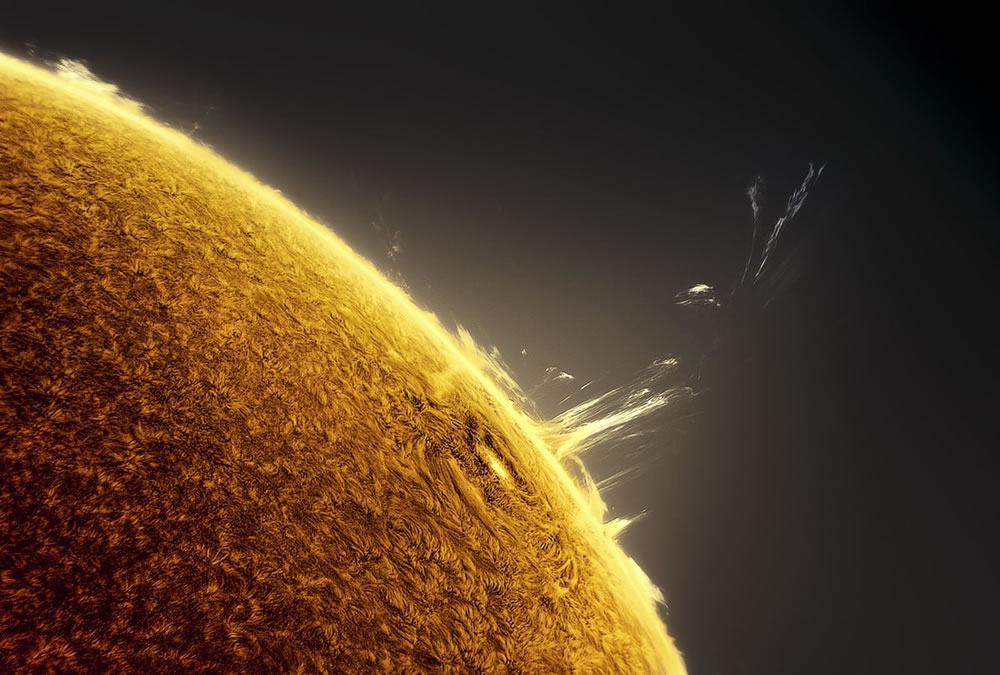
Photograph of the Sun taken from a 27-minute timelapse of a solar, flare which took place on 30 April 2022.
Taken with a Sky-Watcher Esprit ED120 telescope, Daystar Quark Chromosphere filter, Sky-Watcher EQ6 mount, Player One Apollo M-Max Solar camera, 840 mm, 900 frames at 9.1 ms per frame (recorded as video at 109 FPS)
Location: Dark Sky Alqueva region, Évora
#15 The Great Solar Flare by Mehmet Ergün
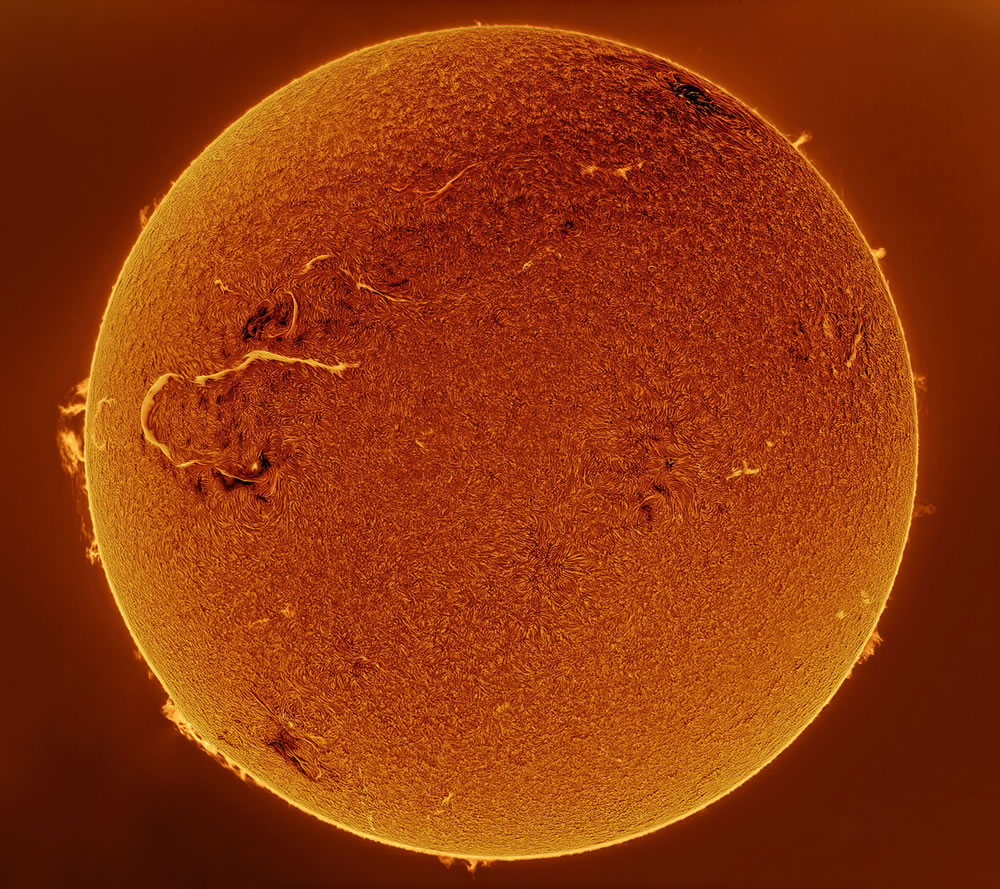
The Sun photographed moving towards its maximum cycle. A large 700,000km long solar flare erupts to the left of the image. The current solar cycle, 25, started in 2019 and is increasing in strength. It will peak in a few years’ time, then weaken over the following years before another cycle starts anew.
Taken with a LUNT LS60 B1200 Double Stack telescope, Rainbow RST-135 mount, Player One Astronomy Neptune-M 178M camera, 500 mm f/8.3, Gain 13, 1.5 second exposure
Location: Traisen, Germany
#16 Dance of the Moons by Damian Peach
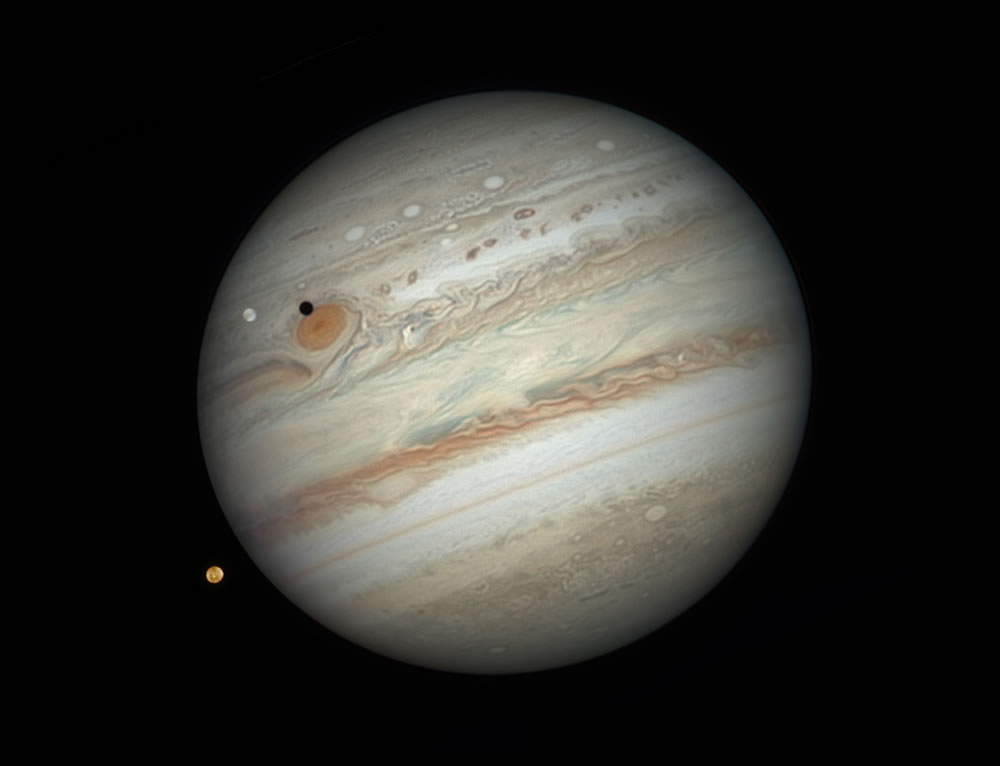
Jupiter flanked by two of its many moons, Io and Europa. Europa is the icy white moon casting a shadow onto the ‘surface’ of Jupiter, and Io is the yellowy-orange lava-covered circle on the lower left. The Great Red Spot is clearly seen with the shadow of Europa cutting across its southern edge.
Taken with a Celestron C14 EdgeHD telescope, Losmandy G11 mount, Player One Saturn-M SQR camera, 8,000 mm f/22, 50,000 single frames combined through RGB filters x 0.02-second exposure
Location: Marley Vale, Barbados, United Kingdom
#17 Pandora’s Box by Derek Horlock
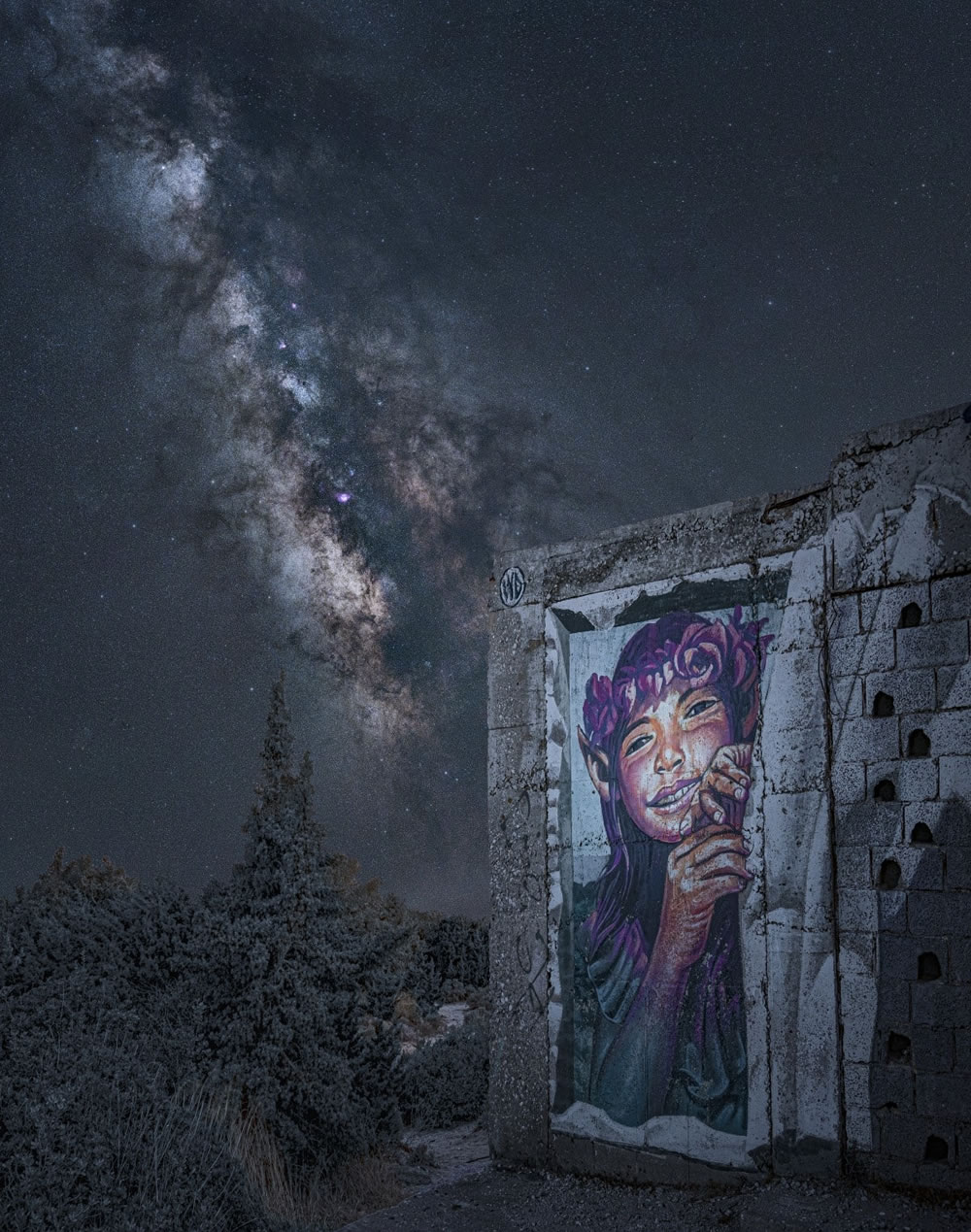
The Milky Way viewed behind a graffiti of Pandora by Wild Drawing (WD) a Balinese artist on the Greek island of Naxos. In Greek mythology, Pandora opened a jar – or box – releasing all the evils of humanity into the world. The wall is part of an abandoned beach hotel complex where graffiti now covers the walls.
Taken with a Nikon Z 6II camera; Sky: 35 mm f/2.8, ISO 1000, 120-seconds x 6 panned images; Foreground: 24 mm f/6.3, ISO 1000, 60-second exposure
Location: Alyko Beach Naxos, Greece
#18 Jellyfish Nebula by Peter Larkin
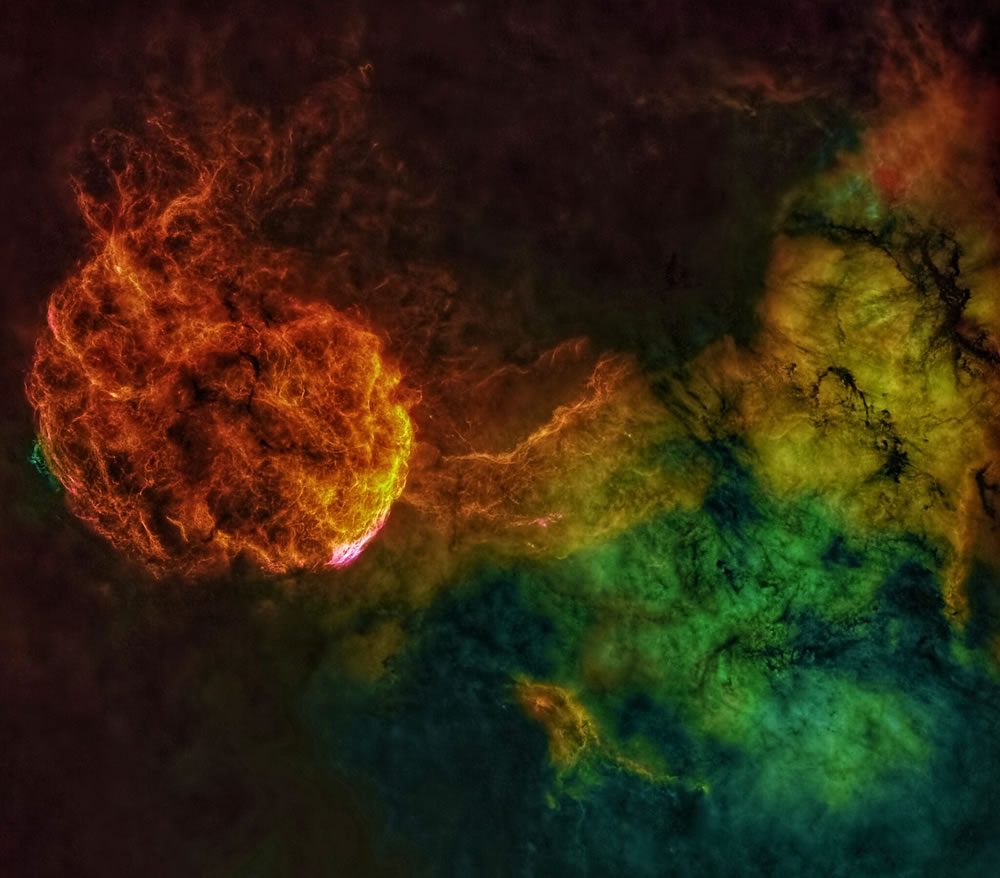
The Jellyfish Nebula (IC 443) is a supernova remnant (SNR) in the constellation Gemini. Here, the stars have been removed from the image in order to focus on the delicate nebulous structures.
Taken with a Celestron RASA 8 telescope, Baader highspeed H-alpha, S and O filters, Celestron CGX mount, ZWO ASI2600MM-Pro camera, 400 mm f/2, ISO 100, multiple 60-second exposures, approx. 11 hours total exposure time
Location: Coppet, Vaud, Switzerland
#19 Colourful Saturn by Damian Peach
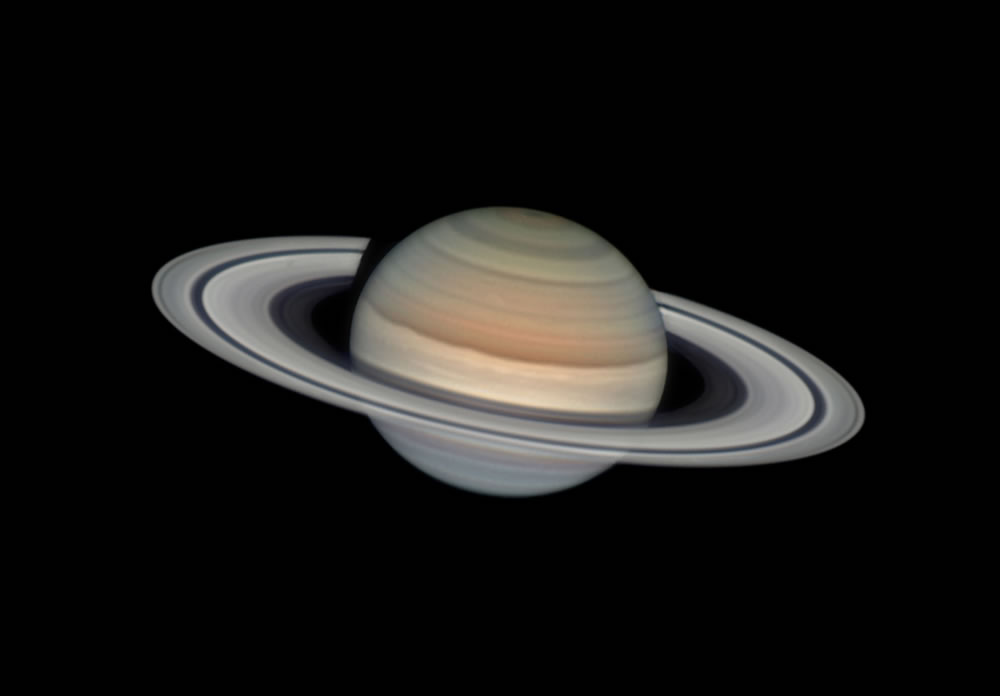
A photograph of Saturn at opposition, the view captures the ring system and coloured bands and zones in its atmosphere. The Cassini Division, the almost 5,000km-wide gap between the two main ring structures is clearly seen.
Taken with a Celestron C14 EdgeHD telescope, Losmandy G11 mount, Player One Saturn-M SQR camera, 8,000 mm f/22, 50,000 single frames combined through RGB filters x 0.02-second exposure
Location: Marley Vale, Barbados, United Kingdom
#20 Emerald Roots by Lorenzo Ranieri Tenti
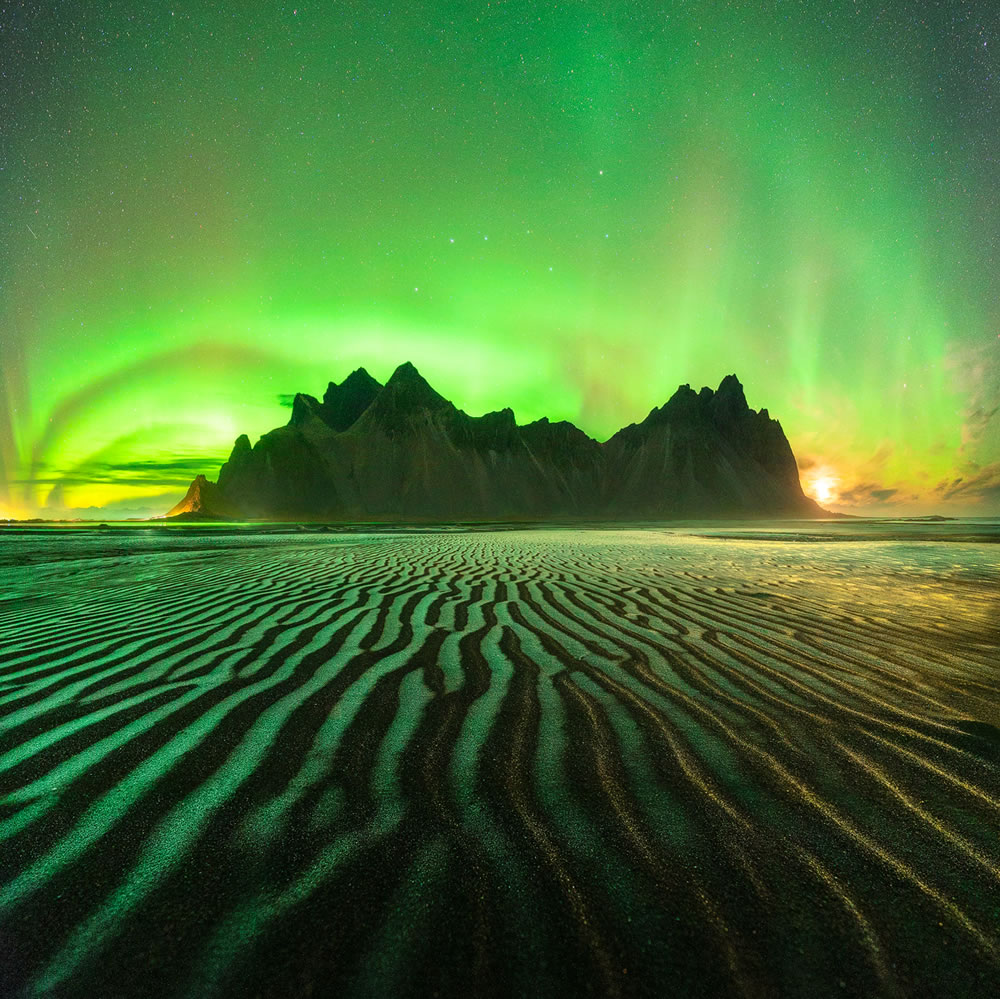
The Northern Lights above the famous Icelandic mountain, Vestrahorn. The aurora is reflected on the black sand beach and the rising moon makes the sand ripples appear golden.
Taken with a Sony ILCE-7S camera, 14 mm f/2.8, ISO 6400, 25-second exposure; Foreground: 23 seconds, Aurora: 8 seconds
Location: Vestrahorn, Stokksnes, Iceland
Related Articles:
[ad_2]
